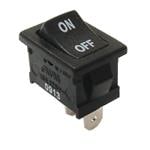 3D Printing
3D Printing
3D printed car could be available before the end of 2015
Once upon a time, the simple glass of the car windshield began to incorporate printed antennas and heaters. Fast forward to 2015, and the world's first car with a 3D printed load-bearing structure and body is the Strati, developed by US startup Local Motors. In 2014, the company undertook a challenge to build a 3D car live on the internet. In late 2015, the first street legal versions are expected to be delivered to customers.
Altair OptiStruct Revolutionizes Lattice Structures for 3D Printing
Altair today announced new OptiStruct solver capabilities that expand topology optimization support for the use of additive manufacturing, or 3D printing. OptiStruct is an award-winning technology for topology, topography, size, and shape optimization that is included in computer-aided engineering (CAE) suite Altair HyperWorks.
3D printer filament produced from waste plastic
3D printing was one of the hottest tech trends of 2014 and, according to industry analysts, will rise over the next year. D3D Innovations has released a next-gen machine that allows users to produce 3D Printer ‘ink’ on demand. Quick, eco-friendly and cost effective, FilaFab Plastic Extruders address demand from hobbyists, educational institutes, polymer laboratories, engineers, architects and workshops.
Electronic assembly cleaning chemistry is pH neutral
In Booth #1011 at IPC APEX, 24th to 26th February in California, KYZEN will demonstrate its AQUANOX A4708 pH neutral electronic assembly cleaning chemistry. This product rapidly cleans under densely populated, low-gap PWB assemblies and is effective on all flux types, including no-clean and water soluble residue.
Dry-film negative photo resist suits MEMS & TSV sealing
Engineered Material Systems is pleased to introduce the DF-3020 dry-film negative photo resist for use in Micro Electro Mechanical Systems (MEMS) and wafer-level packaging applications (TSV sealing). This material formulation has been optimised for hot roll lamination and processing on MEMS and IC wafers.
Topological optimisation benefits of additive manufacturing
From the Greek 'topo' meaning 'place' and 'ology' meaning 'study', topological optimisation is the study of mathematically optimising material layout. When approaching a component part in this way, the end goal is to remove superfluous material in areas of low stress whilst maintaining structural integrity of the whole; the lighter and stronger the better.
3D printing materials market expected to reach $8bn by 2025
According to a report published by IDTechEx, the 3D printing materials market is expected to increase from $800m in 2013 to $8bn by 2025. 3D printing is already common in aerospace, orthopaedic, jewellery and dental sectors, and is becoming more common in education, military, architecture, medical research and automotive sectors. This is because 3D printing is no longer used just for one-off pieces and prototypes, but for final part producti...
3D printer provides accuracy, reliability & repeatability
Quant 3D, a division of OK International, will preview an industrial 3D printer in stand 11.F103 at EuroMold 2014, scheduled to take place 25th to 28th November 2014 in Frankfurt. The Q1000 Industrial 3D Printer is a high-performance, cost-effective 3D printing solution for industrial and large commercial applications.
Morgan Develops Capability For High Permittivity Substrates For High Frequency Circuits And Antenna Applications
In response to demands for miniaturisation, Morgan Advanced Materials has further developed manufacturing capabilities using temperature stabilised dielectric materials with high permittivity for advanced substrate applications.
Certification makes 3D printing 'plug & play'
Having obtained a compliance certificate from TÜV SÜD for its AM250 laser melting machine, Renishaw intends to help 3D printing evolve from being considered an emerging technology, reserved for design and testing, into a mainstream manufacturing tool.







